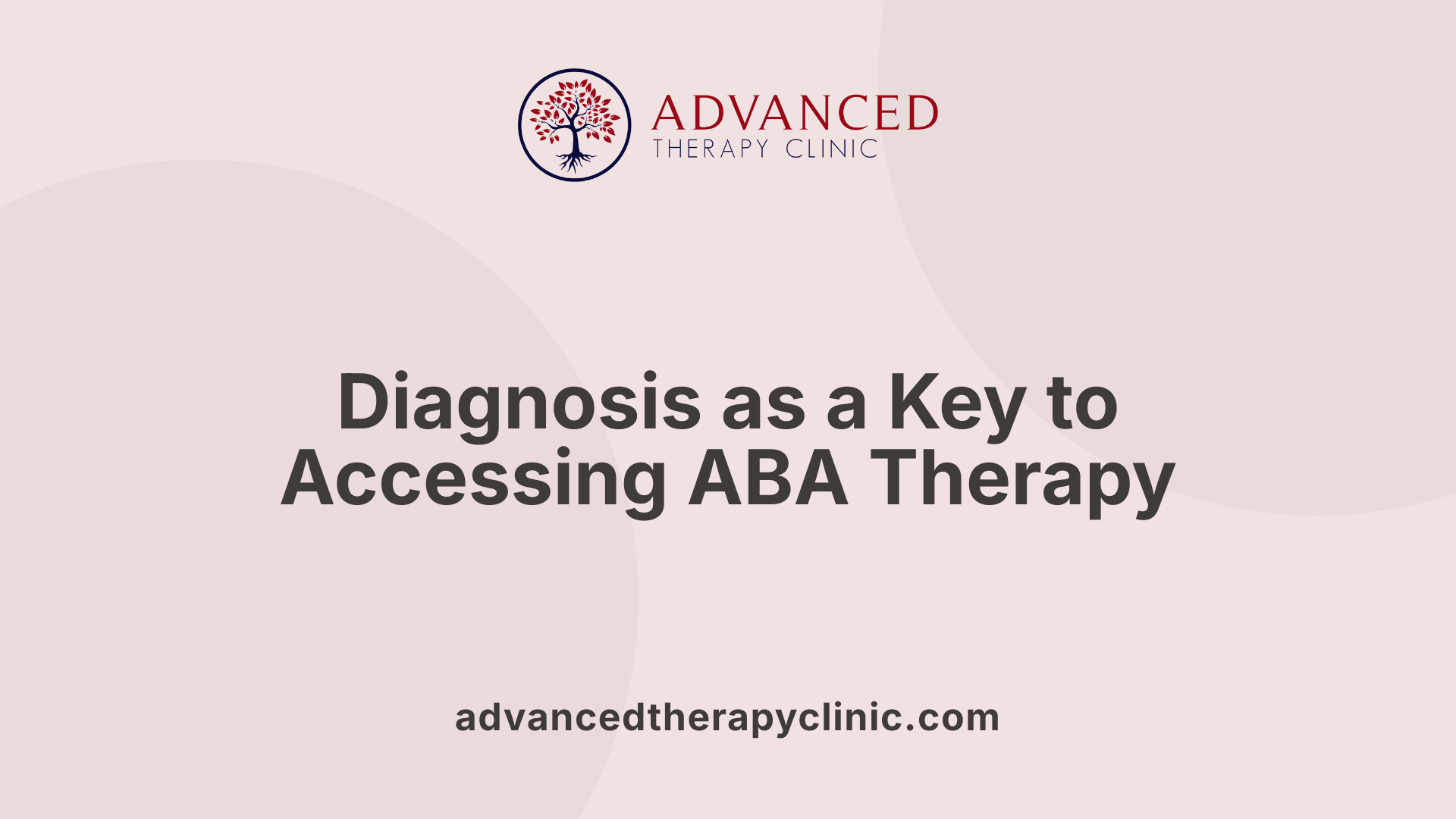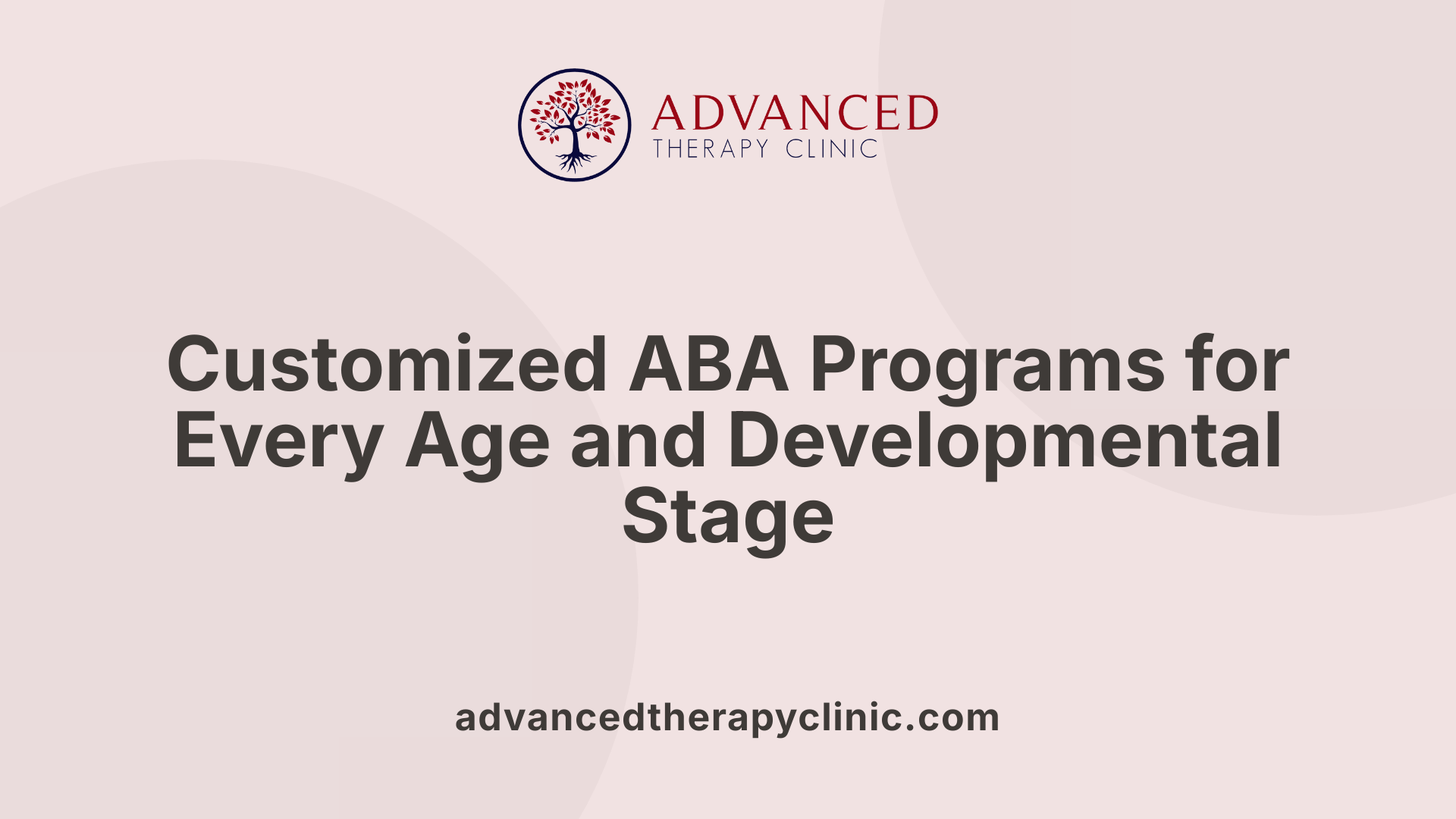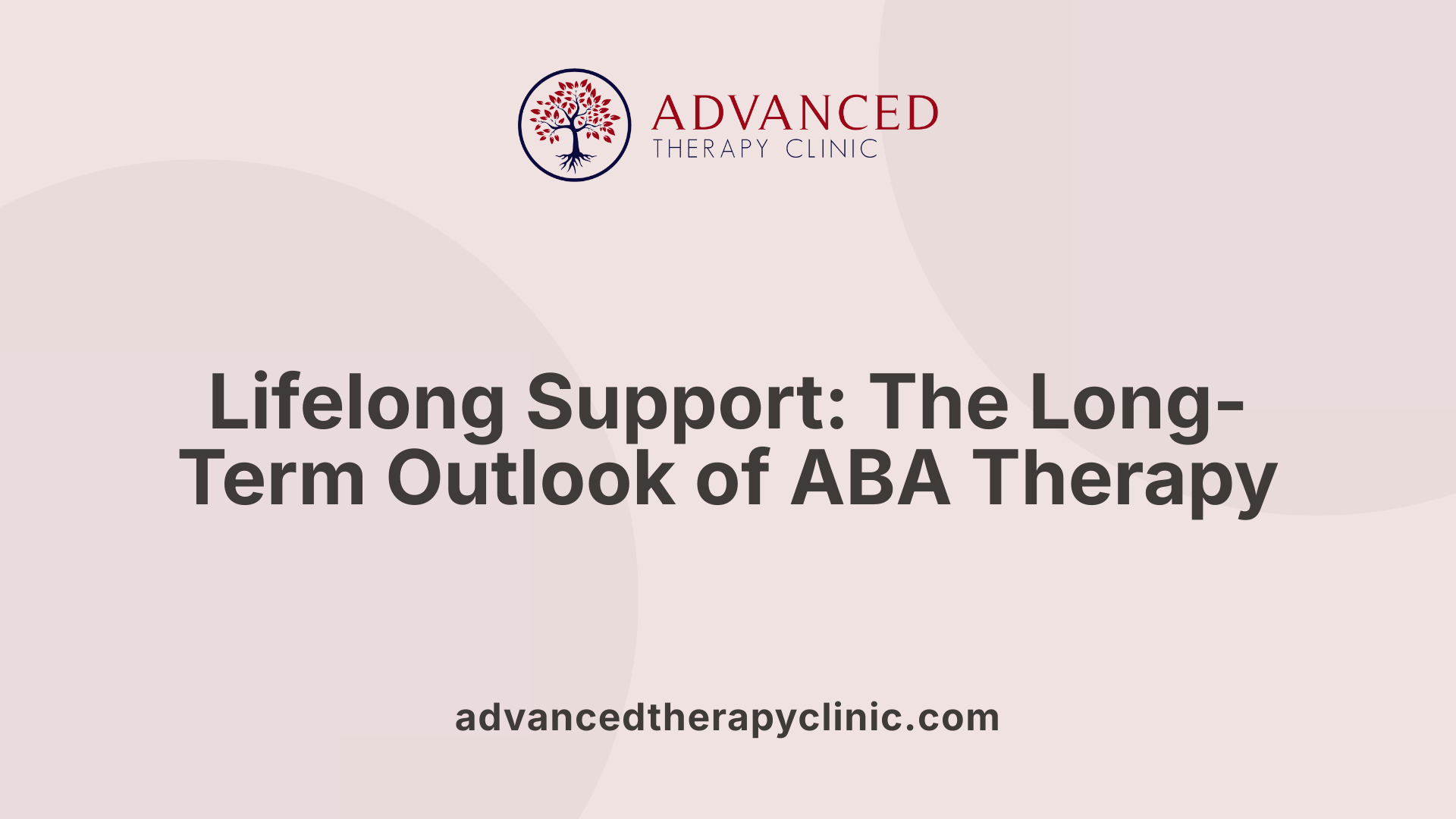Aba Therapy Age Limit


Defining ABA Therapy and Its Age Considerations
Applied Behavior Analysis (ABA) therapy is a cornerstone intervention for individuals with autism spectrum disorder (ASD) and other developmental challenges. One of the most common queries among families and professionals alike concerns the ideal age to begin ABA therapy and whether there are age limits that affect its efficacy or accessibility. This article explores ABA therapy's application across different age groups, its foundational assessment process, and considerations for therapy duration and transition, shedding light on how age intersects with treatment outcomes and planning.
The Role of Diagnosis in Accessing ABA Therapy

What conditions qualify an individual for ABA therapy?
ABA therapy is primarily known for supporting individuals with Autism Spectrum Disorder (ASD), but it is not limited to this diagnosis alone. Other developmental disabilities and behavioral challenges, such as aggression or self-injury, may also qualify a person for ABA therapy. This broad applicability allows more individuals to benefit from tailored behavioral interventions.
Importance of ASD diagnosis
Receiving an ASD diagnosis often acts as the gateway for accessing ABA therapy. It helps clinicians and families understand the specific needs of the individual and guides the creation of a personalized treatment plan. Importantly, a formal diagnosis provides clarity on the areas of focus during therapy, such as improving social communication or reducing challenging behaviors.
How does a diagnosis impact insurance coverage for ABA therapy?
From a financial perspective, an official ASD or related diagnosis is essential because it establishes the medical necessity for ABA therapy. Insurance companies usually require this documentation to approve coverage. Prior authorization and detailed documentation of the diagnosis and treatment plan are common prerequisites to access private insurance or Medicaid benefits.
This diagnostic process ensures that families receive the necessary support without facing significant out-of-pocket costs, making therapy more accessible and manageable.
Early Intervention: Why Age Matters in ABA Therapy
Why is early intervention important in ABA therapy?
Starting ABA therapy before the age of five is crucial because it aligns with key developmental stages when the brain is most adaptable. Early intervention leads to more significant and lasting improvements, helping children develop essential skills and effectively manage challenging behaviors.
At what ages do most children begin ABA therapy?
Most children diagnosed with autism begin ABA therapy between the ages of 2 and 6 years. This timeframe matches general guidelines for early developmental support, maximizing the potential benefits of therapy.
Impact of early intervention on outcomes
Beginning ABA therapy early not only enhances progress in language, social communication, and self-care but also increases the likelihood of skill mastery. Early therapy can reduce the intensity or duration required later, supporting smoother transitions as children gain independence.
| Aspect | Typical Age Range | Importance |
|---|---|---|
| Starting ABA Therapy | 2 to 6 years | Corresponds with critical learning windows |
| Optimal Intervention Period | Before age 5 | Leads to better and more enduring behavioral improvements |
| Therapy Intensity & Duration | Varies with age | Greater intensity early on predicts stronger skill mastery |
| Transition Indicators | Post-skill mastery | Ensures successful reduction or discontinuation of therapy |
ABA Therapy Beyond Early Childhood: Applicability Across the Lifespan
Is ABA therapy only for young children?
ABA therapy is not limited to young children. While early intervention—ideally between the ages of 2 and 6—tends to produce more significant and lasting improvements, ABA can benefit individuals of all ages. Treatment plans are carefully tailored to each person's unique requirements, focusing on behavioral challenges and skill acquisition regardless of age.
How does ABA therapy adapt to different age groups?
ABA therapy employs different approaches to meet the needs of various age groups and developmental stages. For young children, Early Intensive Behavioral Intervention (EIBI) is commonly used, emphasizing comprehensive skill development. For older children and adults, methods like Pivotal Response Training (PRT) and Verbal Behavior Intervention (VBI) target specific skills such as communication and social interaction. This adaptability ensures that therapy remains relevant and effective throughout the lifespan.
Effectiveness regardless of age
Although starting therapy early offers advantages, ABA remains effective well beyond early childhood. The success of treatment hinges on individualized planning, which includes detailed assessments like Functional Behavior Assessments (FBA), and involves families and caregivers to support progress in daily life. The intensity and duration of therapy are customized, maximizing benefits such as improved language, self-care, and adaptive behaviors at any age.
These individualized, flexible approaches demonstrate that ABA therapy is not confined to early years but is a valuable intervention for older children and adults seeking behavioral and developmental improvements.
Key Behavioral Challenges Addressed by ABA Therapy
What types of behavioral challenges does ABA therapy address?
ABA therapy commonly targets behavioral challenges such as aggression, self-injury, and tantrums. These issues often interfere with daily functioning and learning, making behavior management a central focus.
Common behavioral issues targeted
Therapists identify specific behaviors that hinder social interaction and personal safety. Addressing these behaviors helps improve quality of life and increases the individual's ability to engage positively in various settings.
Behavior management strategies
ABA employs systematic techniques to reduce undesired behaviors. Through consistent reinforcement of positive behavior, and use of strategies like Functional Behavior Assessments (FBA), therapists develop tailored interventions to manage challenging behaviors effectively.
Skill development focus
Alongside behavior reduction, ABA emphasizes acquiring new skills. These include communication, social skills, self-care, and adaptive behaviors aimed at enhancing independence and overall functioning.
Through this dual approach—reducing problematic behaviors and building useful skills—ABA therapy supports meaningful improvements for individuals across various ages and needs.
The Importance of Family and Caregiver Involvement in ABA Therapy
Role of caregivers in therapy success
Family and caregiver involvement plays a vital role in the effectiveness of ABA therapy. Caregivers are not just passive observers but active participants who help reinforce behavioral strategies taught during therapy sessions. Their engagement ensures that skills learned can be consistently practiced and generalized across different environments.
Training for families
ABA therapists provide specialized training to families and caregivers. This training equips them with techniques to handle behavioral challenges and promote skill development at home. By understanding the therapeutic approaches, caregivers become better advocates and supporters of the individual’s needs.
Supporting progress outside therapy sessions
ABA therapy emphasizes extending learning beyond the clinical setting. Families support ongoing progress by applying learned strategies during daily routines. This continuity maximizes therapy outcomes, helping individuals maintain and build on their skills effectively.
Overall, family and caregiver involvement is essential for ABA therapy's success, creating a supportive and consistent environment that fosters lasting improvements.
Assessment and Personalized Treatment Planning in ABA Therapy
What assessments are involved before starting ABA therapy?
Before beginning ABA therapy, a comprehensive assessment is crucial to tailor the therapeutic approach to the individual's unique needs. This process typically includes a detailed review of the individual's medical history and relevant diagnostic tests to understand the developmental background and any underlying conditions.
A pivotal component of the assessment is the Functional Behavior Assessment (FBA). The FBA plays a critical role by identifying specific behavior patterns, such as triggers and consequences of challenging behaviors. Understanding these patterns helps therapists design strategies that target the reduction of problematic behaviors and promote positive skills.
How are ABA treatment plans tailored?
Following the assessment, ABA therapy programs create individualized treatment plans. These plans emphasize setting personalized goals that address skill acquisition, behavior management, and overall development.
Therapists focus on areas such as communication, social skills, self-care, and adaptive behaviors, while employing techniques to decrease aggression, self-injury, or tantrums. Progress is continually monitored to adjust interventions and ensure that therapeutic efforts align with the individual's evolving needs and milestones.
This personalized approach maximizes the therapy's effectiveness, enabling meaningful improvements in daily functioning and quality of life.
Determining Therapy Duration and Intensity Based on Age and Needs
How many hours per week do individuals typically receive ABA therapy?
Children receiving Applied Behavior Analysis (ABA) therapy often undergo sessions ranging from 20 to 40 hours weekly, particularly in their early years. This schedule aims to provide intensive support that facilitates significant skill development and behavior management during crucial developmental periods.
What factors influence the length of ABA therapy?
The duration and intensity of ABA therapy are highly individualized. Key determinants include the child’s age, the severity of the autism or other developmental challenges, insurance coverage provisions, and the family's ability to participate and support therapy activities. These factors shape therapy plans to balance effective progress with practical constraints.
What are predictors of therapy success?
Successful ABA outcomes closely relate to the therapy’s intensity and duration. More frequent and sustained interventions tend to lead to better mastery of critical skills such as language acquisition, social communication, self-care, and adaptive behaviors. Moreover, therapy success also depends on the child’s ability to generalize learned skills across different environments and the continued involvement of caregivers in reinforcing progress.
In summary, ABA therapy hours and duration are tailored to individual developmental needs and family circumstances, with early, intensive interventions showing the most promising results in long-term skill development and behavior improvement.
Insurance and Funding Options for ABA Therapy Across Ages

Does insurance cover ABA therapy for all ages?
Insurance coverage for Applied Behavior Analysis (ABA) therapy is not uniform across all ages and depends largely on the specific insurance provider and the individual policy. Most insurance plans, including private insurance and Medicaid, do provide coverage for ABA therapy, but they typically require prior authorization. This process demands detailed documentation that establishes the medical necessity of the therapy, often based on diagnostic assessments like an autism spectrum disorder (ASD) diagnosis or other qualifying developmental disabilities. Regardless of the patient's age, insurance companies use these criteria to determine eligibility and extent of coverage.
Prior authorization requirements
Prior authorization is a critical step in obtaining insurance funding for ABA therapy. It involves submitting comprehensive medical records and treatment plans to the insurer before beginning or continuing therapy. This process ensures that the therapy meets medical necessity guidelines and helps control healthcare costs. Patients and families should collaborate closely with their healthcare providers and therapy centers to prepare and streamline authorization paperwork.
Are there other ways to fund ABA therapy?
For families facing challenges due to limited insurance coverage or out-of-pocket costs, alternative funding options exist. Scholarships and grants specifically designed for individuals requiring ABA therapy can be lifesavers. These funds come from nonprofit organizations, community groups, and sometimes state programs aimed at supporting developmental therapies. Utilizing these resources can ease financial burdens and increase access to essential therapies.
Access to ABA therapy is crucial across ages, but understanding the nuances of insurance coverage and additional funding avenues significantly aids in making informed decisions about therapy options and support services.
Measuring Progress and Knowing When to Transition or Discontinue ABA Therapy

When is it appropriate to reduce or end ABA therapy?
Reducing or ending Applied Behavior Analysis (ABA) therapy is considered when the individual demonstrates several critical indicators. These include increased independence, the ability to learn from the environment without direct instruction, mastery of essential skills, and the capacity to generalize those skills across different settings. This means the person can apply what they've learned in therapy to their daily life and social interactions effectively.
Why is transition planning important in ABA therapy?
Transition planning plays a vital role in ABA therapy to ensure a smooth and successful exit from intensive treatment. It helps individuals maintain the skills and progress they've made during therapy, preventing regression. Thoughtful transition planning also supports adjustment to less intensive support systems, promoting continued growth in a more natural and less structured environment.
Skill mastery and independence in ABA therapy
Mastery of skills such as language, social communication, self-care, and adaptive behaviors signals significant progress in ABA therapy. Achieving these milestones reflects increased self-sufficiency and readiness for less intensive intervention. Therapists focus treatment plans on individual goals to facilitate this progression and continuously monitor improvements to guide decisions on therapy duration and intensity.
The process of measuring progress ensures that therapy is effective and personalized, ultimately guiding when to transition out or reduce support to maximize long-term success and independence.
Tailoring ABA Programs to Age Groups and Developmental Needs

What ABA programs are designed for different age groups?
ABA therapy adapts to the unique developmental stages and needs of individuals through specialized programs.
One primary program is Early Intensive Behavioral Intervention (EIBI), aimed at young children, usually starting between ages 2 and 6. EIBI focuses on early, high-intensity therapy to build foundational skills in language, social interaction, and daily living.
For older children and individuals, Pivotal Response Training (PRT) and Verbal Behavior Intervention (VBI) are commonly used. PRT emphasizes motivation and responsiveness in pivotal developmental areas to encourage broader improvements in behavior and communication.
VBI targets language development by teaching verbal skills in a structured way that supports functional communication. These programs help tailor therapy to progress beyond early childhood, addressing evolving educational and social demands.
Together, these programs ensure a continuum of care that meets changing developmental needs across a person’s lifespan.
The Long-Term Outlook: Lifespan Considerations in ABA Therapy

Can ABA therapy continue throughout an individual's life?
ABA therapy is a flexible intervention that is not limited to early childhood. While early intervention between ages 2 and 6 is often emphasized due to its significant impact, ABA can continue throughout an individual's life. The therapy is adapted to meet changing needs as the person grows, ensuring ongoing support for development and behavior management.
Adjusting goals with age
As individuals age, the objectives of ABA therapy evolve. For young children, the focus may be on foundational skills like language acquisition and social communication. In adolescence and adulthood, goals often shift to more complex skills such as independence, self-care, vocational training, and social relationships. Treatment plans are continuously reviewed and personalized, taking into account progress and emerging priorities.
Maximizing developmental potential
The intensity and duration of ABA therapy are tailored based on age, condition severity, and individual progress. An essential part of long-term planning involves monitoring when a person has mastered skills and can generalize them across different settings. Transition planning ensures a smooth reduction or conclusion of therapy when appropriate, while also providing strategies to sustain gains. Family and caregiver involvement remains vital at all stages to reinforce skills and support development continuously.
Through these adaptations, ABA therapy serves as a lifelong tool to enhance quality of life and help individuals reach their fullest potential.
Balancing Age and Individual Needs for Effective ABA Therapy
ABA therapy is widely regarded as a powerful intervention originating from the principle of early intervention, with the ideal starting age between 2 and 6 years. However, it is important to recognize that ABA therapy is not strictly limited by age; personalized assessment and treatment planning allow for flexible application across all ages. Success hinges on careful consideration of individual needs, therapy intensity, family involvement, and judicious transition planning. Understanding these factors empowers families and professionals to make informed decisions, ensuring ABA therapy serves as a valuable tool for improving behavioral outcomes and quality of life regardless of chronological age.
References
Recent articles

Expressive Speech Delay 2-Year-Old
Understanding and Addressing Expressive Speech Delay in Toddlers

How Speech Recognition Works
Unlocking the Power of Speech Recognition in Therapy and Healthcare

Autism and Head Size
Understanding the Complex Relationship Between Autism and Head Size

Occupational Therapy in Autism
Enhancing Independence and Quality of Life Through Occupational Therapy in Autism

Do Autistic People Understand Sarcasm?
Navigating the Nuances: Understanding Sarcasm and Social Communication in Autism

Autism Routines
Crafting Effective Daily Structures for Children with Autism


